Harry George Lovelock
Air Mechanic I J26402 Harry George Lovelock, DSM, 2 Squadron, Royal Naval Air Service
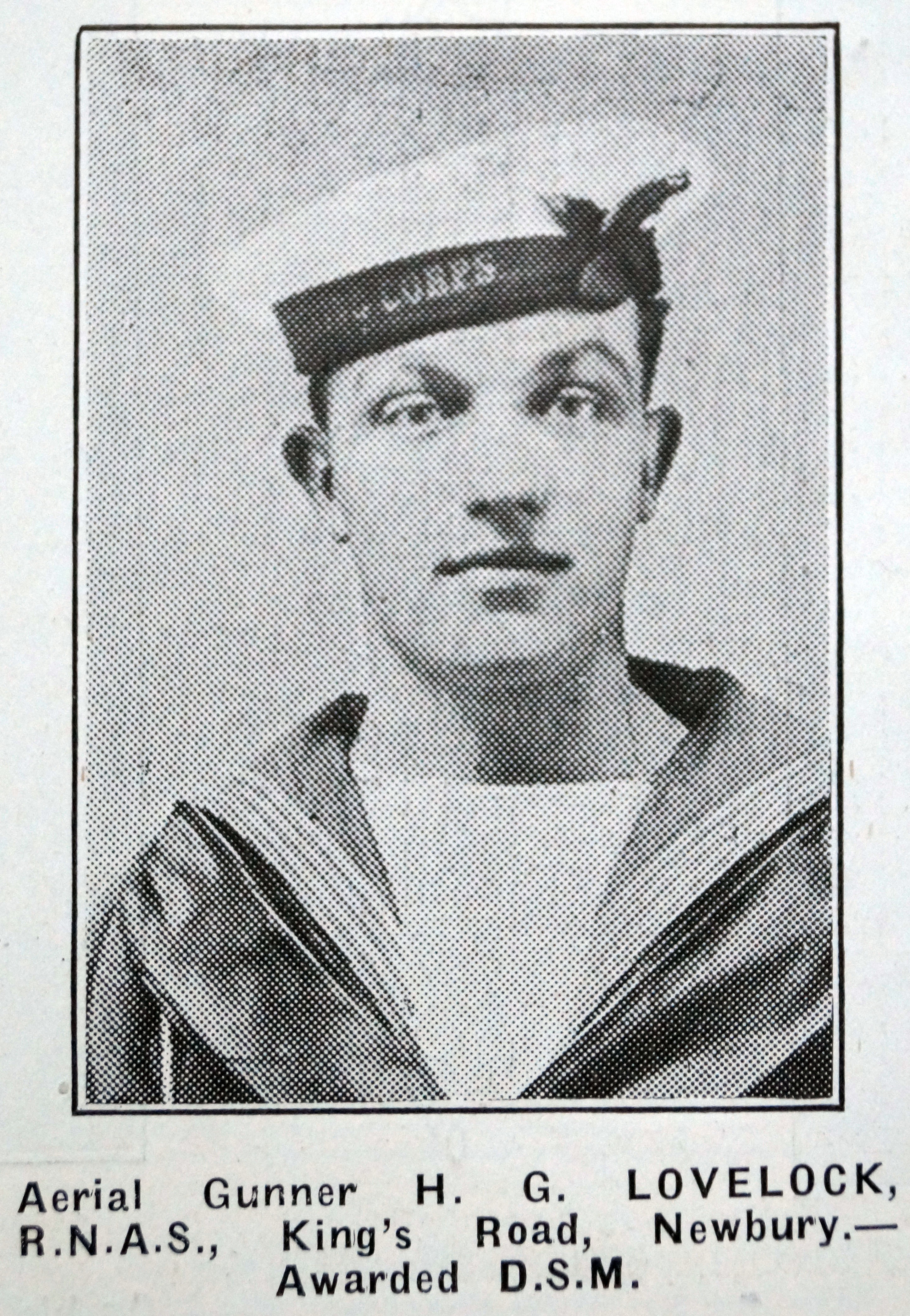
Harry Lovelock |
Harry was born in Henley, Oxfordshire, in 1897, the son of Harry Lovelock and his wife Elizabeth (née Winter) – however there is some confusion about both the place and date!
According to census returns his birthplace was Henley, but he was christened (on 11 April 1898) in the church of Holy Trinity, Rotherfield Greys. This is explained by the urban expansion of Henley into neighbouring Rotherfield Greys, Holy Trinity was built to serve this part of the town. At the time of his christening the family was living at 4 Toronto Terrace, Harpsden Road. By 1901 they had moved to 18 York Road in Henley proper.
His birthdate is more difficult to tie down as two different dates appear in official documents. His father Harry senior also served during the Great War and his service record includes details of his children. He gives Harry’s birth date as 30 August 1897, this and the birthdates of his siblings (Winifred Elsie – 11 April 1896 and Jack – 11 August 1909) are marked ‘verified’. Presumably this indicates that their birth certificates had been checked? However, Harry’s school record from a short stay in Sandhurst (Yorktown Road) gives his birth date as 30 July 1897, as does Harry’s own Royal Navy service record!
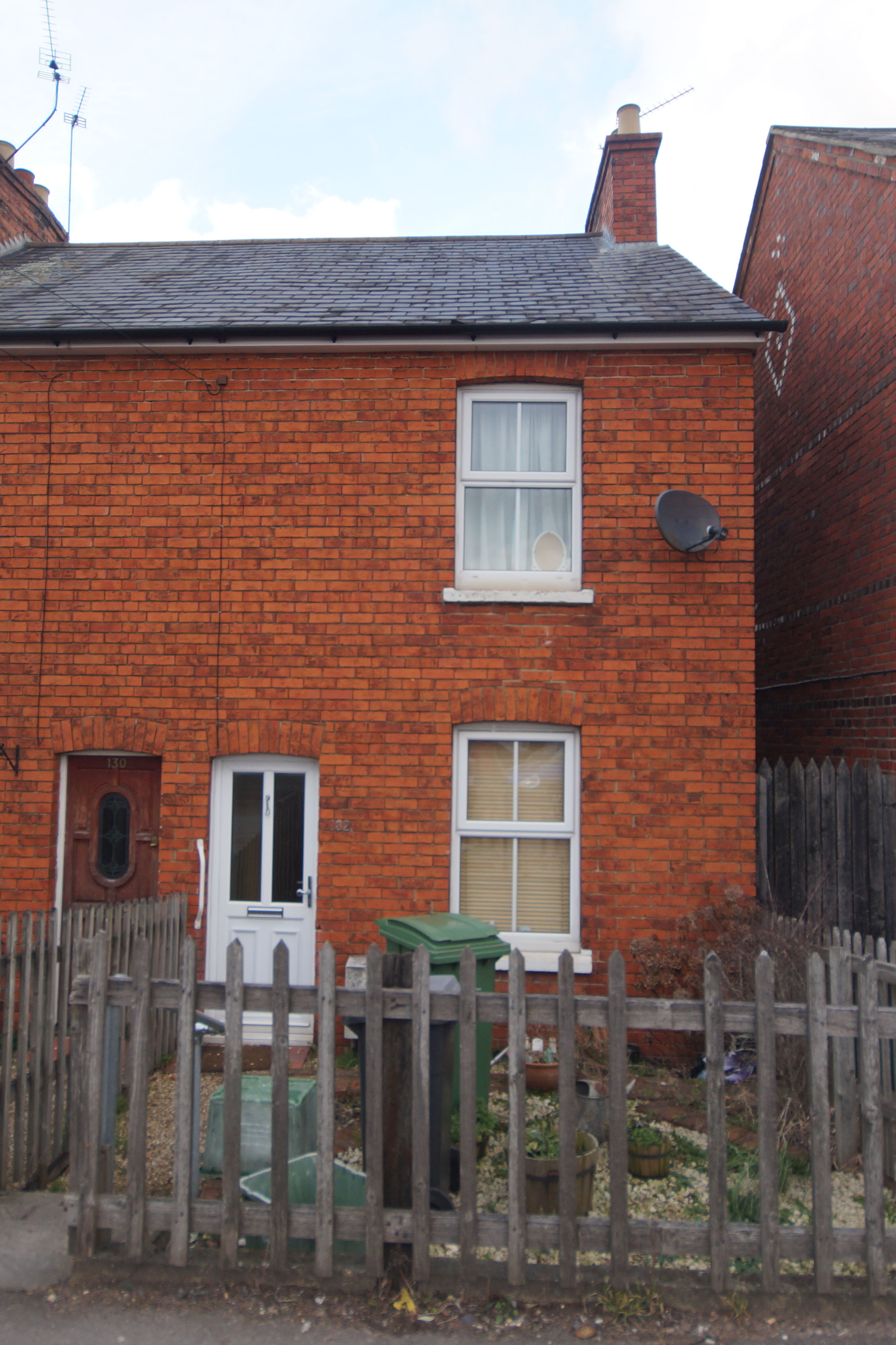
132 King's Road in 2018 |
By the time the Lovelocks came to Newbury young Harry had completed his schooling; when he enlisted he was working as a butcher’s boy – given his father’s trade it is likely that he had been working in this role since he left school.
He enlisted on 12 August 1913 into the Royal Navy as a boy sailor (Boy Class II). After training he was promoted to Boy Class I on 1 April 1914 and was posted to HMS Theseus.
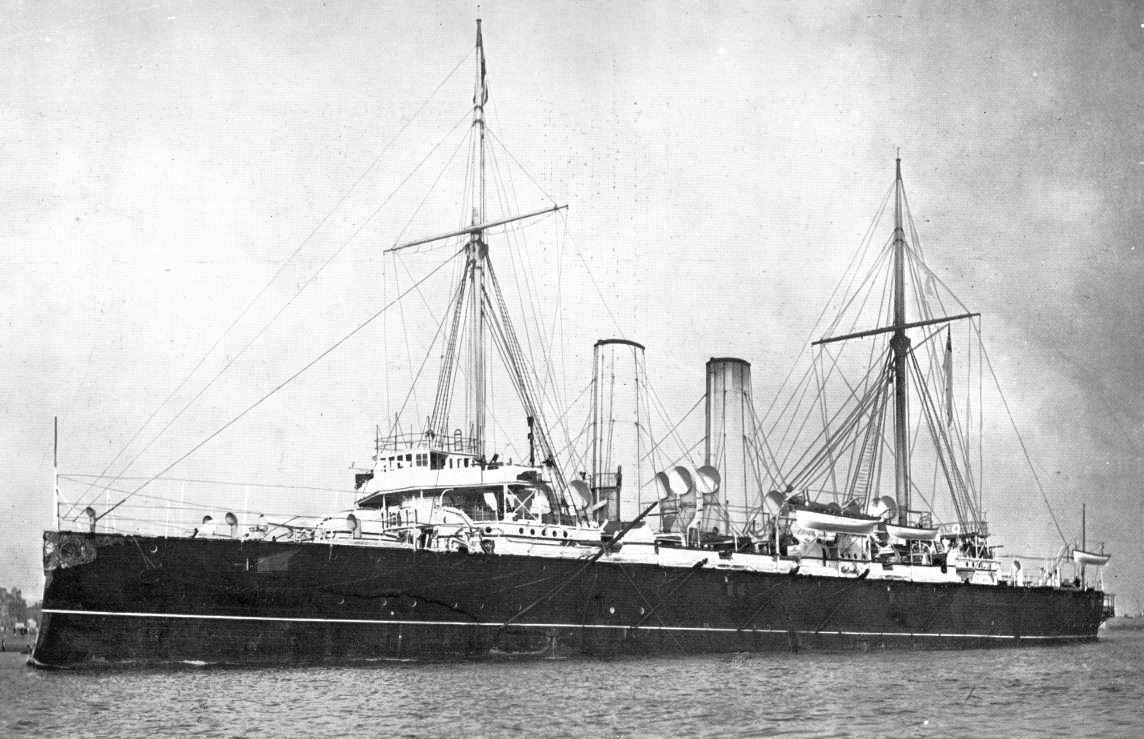
Most of Harry's short service as ship's crew came as a Boy I on HMS Theseus from April to July 1914. |
On Newbury’s Active Service Roll (a list of serving men printed irregularly in the local paper from September 1914 to April 1916) he was listed as Seaman H Lovelock, HMS Theseus – despite his leaving this ship's crew before the war began, well before his name fi1rst appeared on the Roll in late September 1914.
As already noted Harry gave his birthdate to the Navy as 30 July, which meant that, on 30 July 1915, as far as the Navy was concerned, his eighteenth birthday, he became a man. On that day he signed on for a full 12 year term of service and was promoted to Ordinary Seaman. He had already made a move from the sea to the air and was classified at the same time as an Air Mechanic Class II. On 1 August 1916 he was regraded as Acting Air Mechanic Class I (after one day at Class II) and was posted to the Royal Naval Air Service (3 Wing) in France.
Most Air Mechanics spent their war on the ground servicing and repairing aircraft in preparation for use, but not Harry, he took to the air as a gunlayer or gunner in two seater aircraft. It is likely that he went to France as a mechanic before volunteering to fly – perhaps he showed some aptitude for the job? He spent time at the Navy training school at Crystal Palace in May/Jun 1917 – this could be when he retrained for the new role.
He served in France with 5 Squadron RNAS which was flying Sopwith 1½ Strutter aircraft (in a light bomber role) until July 1917 when the squadron was re-equipped with Airco DH4 aircraft. It was just after this when, on 21 July, Harry undertook his first mission as gunner in a DH4 (N6000) piloted by Flight Sub-Lieutenant John Southey Wright on a bombing raid on Varssenaere Aerodrome. It was an uneventful mission apart from both men being almost unable to see anything because of excessive oil spraying out of their engine.
A report from that time mentions Harry’s success in shooting down and enemy aircraft (EA).
SUNDAY, 5 AUGUST 1917
General Headquarters, August 6th.
“Yesterday, after several days of inactivity due to unfavourable weather, our aeroplanes were again able to carry out successful bombing raids and other work. In air fighting five German aeroplanes were brought down, one of which was forced to land behind our lines, and three others were driven down out of control. One of our machines is missing.”
RNAS - No reconnaissances owing to bad weather and low clouds. Usual fighter patrols over the fleet, and one patrol escorting bombing machines up the coast. A bombing raid was carried out by DH4s of No 5 Sqn RNAS; nine 65-lb and fifty-one 16-lb bombs were dropped on Snelleghem aerodrome and two direct hits were observed.
...
A bombing flight of No 5 Squadron RNAS was attacked by EA whilst approaching their target. Flt Cdr T F Le Messurier and Gunlayer Jackson engaged four, the tail plane of one coming off in the air, which went down completely out of control. Flt Sub-Lt J S Wright and Gunlayer Lovelock also drove a machine down out of control about the same time. On the way back, the formation was again attacked by six EA. Flt Cdr T F Le Messurier and Gunlayer Jackson and A/Flt Cdr R J Slade and Gunlayer Darby each succeeded in driving down an EA out of control. All machines returned safely.
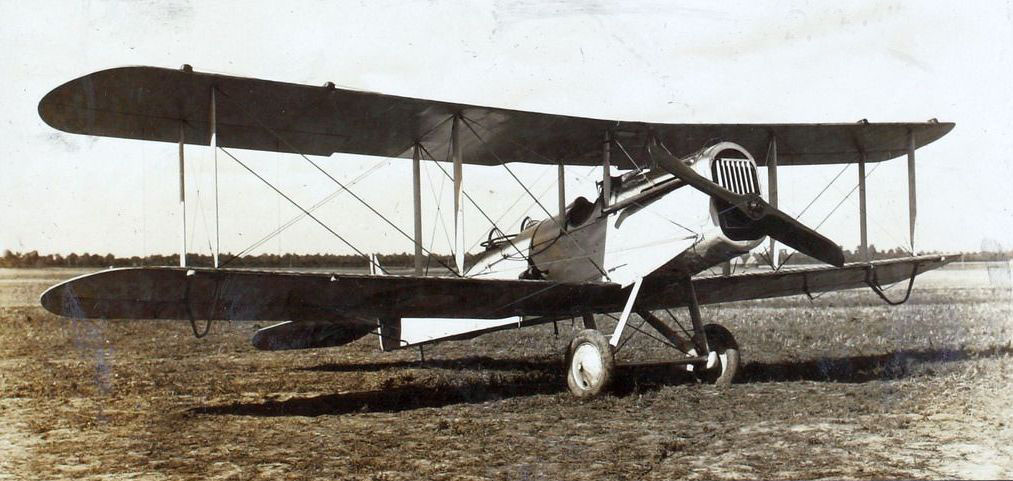
The DH4 was one of the most successful aircraft designs to come out of World War 1, they were even used by the US Postal Service after the war.. |
The DH4 was a versatile machine and some of the squadron would fly on a mission as escorts for their comrades carrying bomb loads. Harry usually flew as gunner in an escort – the best gunners would be selected for this crucial role. Escort planes would also carry bombs, which would be dropped on the target if it was reached uneventfully, but, should enemy aircraft attack, the bombs would be jettisoned to make the aircraft faster and more manoeuvrable.
Wright and Harry were debriefed after the 5 August mission, the report reads:
Six Albatross were spotted of which three attacked, one before reaching the objective and the other two on the return journey. Observer emptied a pan into the first one and it was observed to go down in a vertical nose dive and was not seen to flatten out. Bombs were released just before reaching objective on account of enemy aircraft and as my machine was a part of the fighting escort.
Five torpedo boats were observed off Ostende steaming N. at 18.05 BST.
Very little anti-aircraft fire.
Shooting down an enemy was a noteworthy event; this may have been the action for which he was awarded a Distinguished Service Medal (the Navy equivalent of the Military Medal). However, the award was promulgated in a Supplement to the London Gazette date 2 November 1917, the same Gazette announced the award of a Distinguished Service Cross to John Wright for his actions as pilot of Harry’s DH4 on another day:
Supplement to the London Gazette, 2 November 1917. 11321
To receive the Distinguished Service Cross
...
Flt Sub-Lieut Leonard William Ormerod
Flt Sub-Lieut John Southey Wright
In recognition of their services on 5th September 1917, when they carried out a bombing attack on Bruges Docks, obtaining direct hits.
The report of the raid shows that the two planes piloted by Ormerod and Wright carried out successful attacks hitting suitable targets with their bombs – which seemed to be enough to earn the award of the DSC; it seems likely that Harry was also decorated for his part in this raid. Another gunlayer, PO Bert Hinckler, who was on the same raid in a plane flown by Flt Sub Lt Sproat, was also awarded a DCM.
The local paper passed on news of the award:
Newbury Weekly News, 8 November 1917 – Local War Notes
Mrs Lovelock, of King’s-road, Newbury, has been informed that her son, Gunner H G Lovelock, of the Naval Air Service, has been awarded the DSM for his gallantry in bombing the enemy aircraft. Gunner H G Lovelock has been in several air battles, but has luckily escaped with slight injuries.
In 2½ months with 5 Squadron he flew a total of 18 missions, all with Flight Sub-Lieutenant Wright in the pilot’s seat.
However, by the time his name appeared in the London Gazette he was not faring so well. In October 1917 he was in trouble when he disobeyed orders – no details have been uncovered (yet) but the offence was serious enough to earn him 14 days detention, possibly served at the RNAS base at Eastchurch on the Isle of Sheppey (his service record shows a 16 day stay there following sentencing).
On release he was sent to Tregantle Fort in Cornwall for three weeks. This old coastal defence was being used by the RNAS as a storage facility – it seems that the RNAS was keeping Harry busy while they decided what to do with him. Eventually the decision was made to send him back to France. A month later he was posted to 2 Squadron.
On 22 March 1918 he was gunner and Flight Sub-Lieutenant F E A Bambridge was pilot in DH.4 No 6755, once again on escort duty, when the aircraft was hit by anti-aircraft fire from the ground. Bambridge attempted to avert a total disaster (reportedly crawling out on to the wing in an attempt to right the machine, which had turned over and was flying upside down) but the plane crashed behind the British line. Harry was killed, either by the crash or the anti-aircraft shell, but Bambridge survived:
Newbury Weekly News, 4 April 1918 – Local War Notes
Mr and Mrs Lovelock, of Kings-road, have received the sad news that their son, H G Lovelock, DSM, of the RNAS, was killed in Belgium on March 22nd. Deceased was a gunlayer in a machine with Flight Sub-Lieutenant Bambridge, and was escorting a machine over the lines, when it was struck by anti-aircraft fire. The machine turned over on its back in the air, and the pilot did all in his power, crawling on the wings to bring the machine safely to ground, but it crashed upside down our side of the lines. The pilot had his legs broken in three places, but deceased was unfortunately killed. He is spoken of by his commander, as one of the squadron’s best and bravest gunlayers. The funeral was attended by officers and men, and also by 20 Belgian officers.
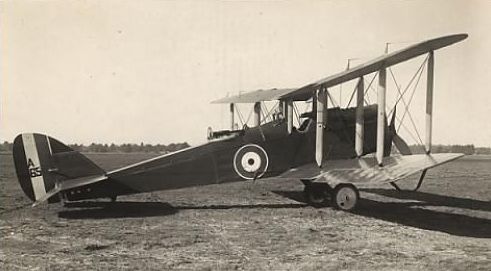
This DH4 is No 7665 - the very aircraft that Harry and Flt Sub Lt Bambridge were flying when they were shot down. |
Harry was buried in grave A.4 at Steenkerke Belgian Military Cemetery.
Back home his death was announced in the local paper – twice:
Newbury Weekly News, 28 March 1918 – In Memoriam
In ever loving memory of our dear son, H G Lovelock, DSM, 1st Air Mechanic, R.N.A.S., killed in action in France, March 22nd, 1918, aged 20 years and 8 months.
The blow was sudden, the shock severe
To part with one we loved so dear.
On earth there’s strife, in Heaven rest,
They miss you most who loved you best.
Deeply mourned by his Mother and Father, Brother and Sister,
1, Avon View, King’s Road, Newbury.
Newbury Weekly News, 28 March 1918 – In Memoriam
In loving memory of H G Lovelock, DSM, 1st Air Mechanic, R.N.A.S., killed in action in France, March 22nd, 1918, aged 20 years and 8 months.
Sleep on dear Harry in your far off grave,
A grave I may never see;
But as long as life and memory lasts,
I will remember thee.
A devoted friend, C.G.
It appears that Harry had an admirer.
However, the anniversary of his death was only marked by a single notice:
Newbury Weekly News, 39 March 1919 – In Memoriam
In ever loving memory of H G Lovelock, DSM, A.-A.M.I.R, N.A.S [sic], who was killed in action on March 22, 1918.
He sleeps besides his comrades,
He died a hero’s death,
His name is written in letters of love,
In the hearts he left at home.
May the heavenly winds blow softly,
O’er that sweet and hallowed spot,
Though the sea divides his grave from us
He will never be forgot.
From his loving mother and father, brother and sister.
[It seems that the typesetter was confounded by his rank: A.-A.M.I.R, N.A.S should be A-A.M.1., R.N.A.S.]
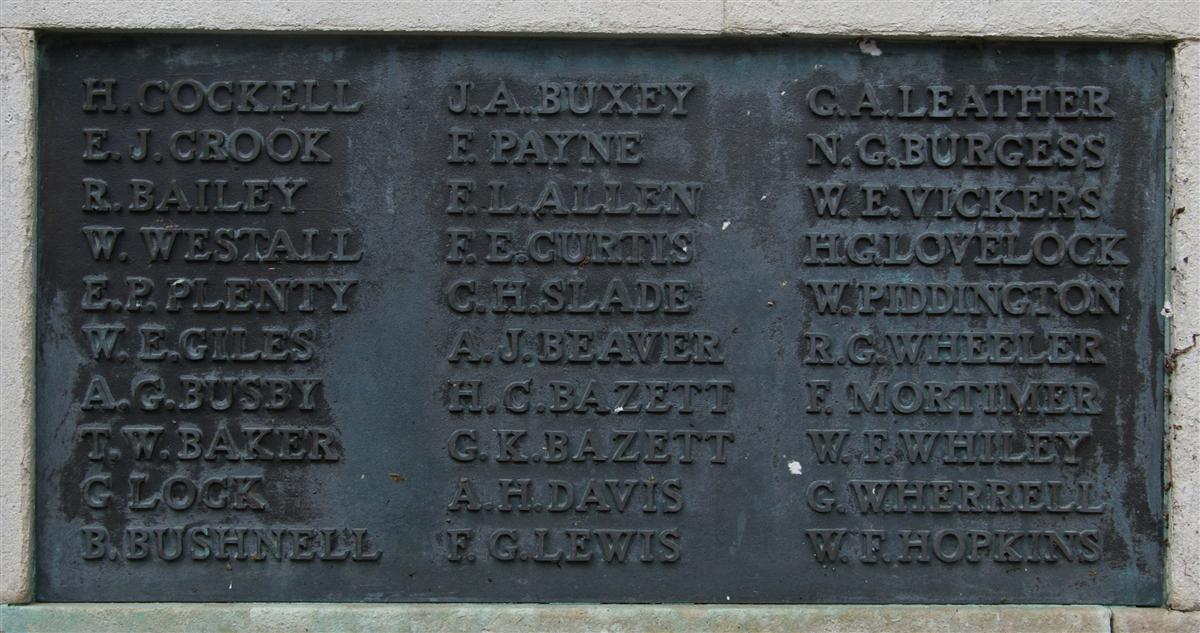
Harry's name on Newbury War Memorial (right) |
He is only remembered on one Newbury memorial, the main Town Memorial in Bartholomew Street (tablet 9). Many men were commemorated on one or more other memorials in churches, schools or workplaces, but Harry’s time in Newbury was limited and, it seems, that his parents were not involved in any of the main churches.
Family
Harry’s brother Jack was far too young to serve during World War I, but his father was not too old. Harry senior was an old soldier who had served his time before young Harry was born. He had enlisted into the Army Service Corps on 3 August 1893 for a total of twelve years, three with the colours followed by nine years in the Reserve. So, after three years in uniform he would have returned to civilian life in August 1896. He was still in uniform when he and Elizabeth married, on 18 March 1895 at the parish church at Bray.
Service in the Reserve meant that he was paid to be on call for future service in an emergency, pay which Reservists had to do very little to earn. An annual camp was about it. Of course there was always the chance that an emergency would crop up and, on 9 October 1899, he was recalled to the colours and shipped out to South Africa where the 2nd Boer War was in full flow. On 15 May 1902 he was returned to the Reserve and to civilian life. In August 1905 his full twelve years expired and he was discharged from the Army.
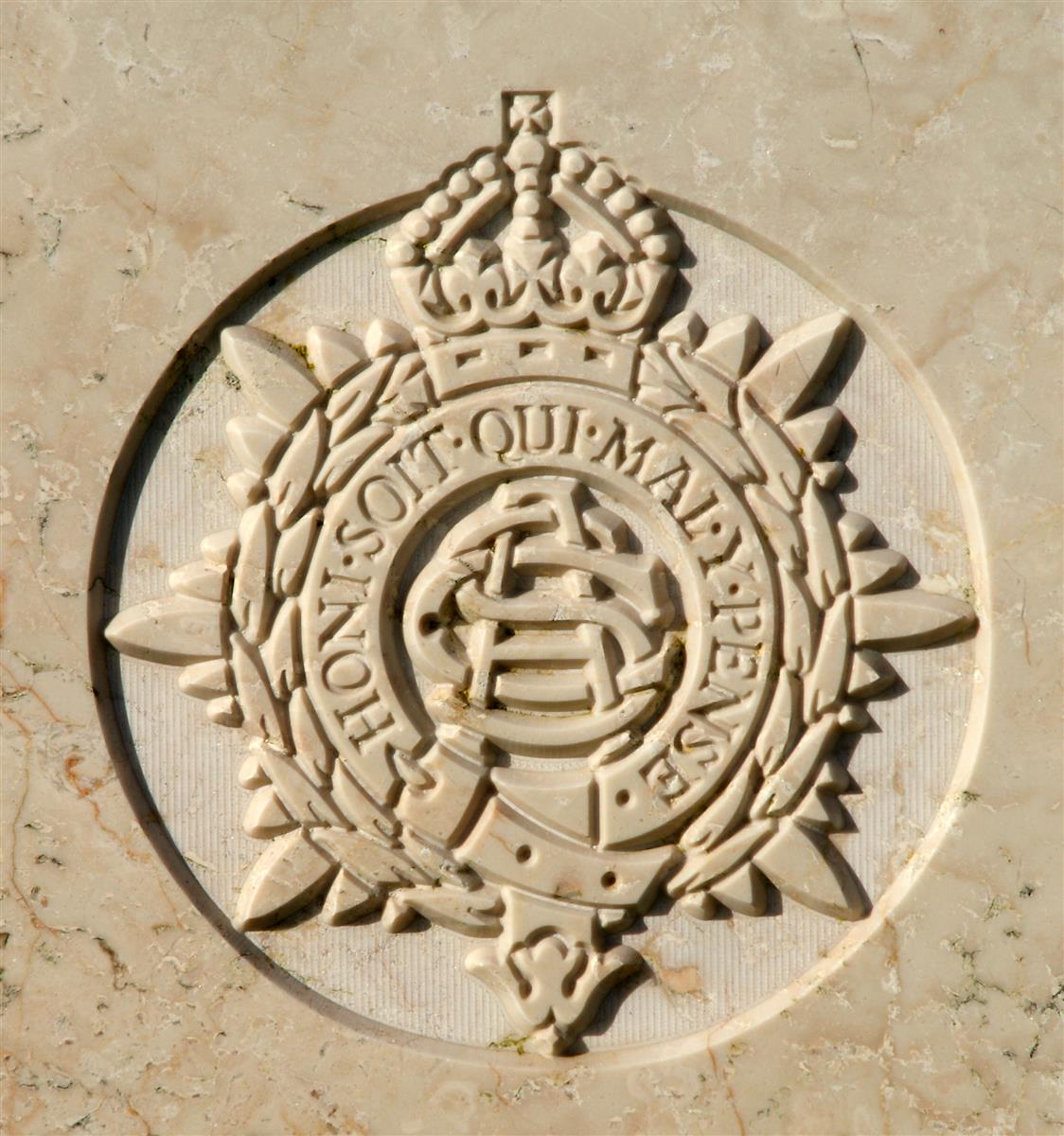
The regimental badge of the Army Service Corps, as used on CWGC headstones. |
But that was not the end of his military service – at some stage he signed on again, but this time for part time soldiering with what became the Territorial Service in 1908. Service with the Territorials was for four years, with options to extend this if the man so desires. He remained in the Army Service Corps as a part of the 2nd South Midland Mounted Brigade Transport and Supply Column (part of the Territorial division covering Berkshire and five other counties).
When war was declared in 1914 Harry could quite reasonably have decided that he had ‘done his bit’, he was 43 years old, had spent at least 16 years in one form of military service or another including a year in South Africa during the Boer War – who could blame him if he stayed at home with his wife and children? And so, on 7 December 1914, Harry joined the Army for a third time.
When he was discharged from the regular army it was at the rank of Private, but he seems to have risen in rank during his Territorial service – when he enlisted in 1914 he as immediately made a sergeant in his former Territorial unit. He remained in England until March 1916 being promoted twice – to Acting Staff Sergeant on 6 August 1915 and to Acting Staff Sergeant Major on 16 October 1915. On 3 March 1916 he went to France to join the 56th Field Bakery. Seven months later, on 2 April 1917 he loses his acting rank and reverts to his substantive rank of sergeant. The reason given in his record is ‘inefficiency’. The inefficiency was caused by serious loss of fitness resulting from the onset of rheumatoid arthritis.
By October the problem was bad enough to result in his return to England and, on 3 January 1918 he was discharged from the Army with a small pension (his condition was deemed to have been aggravated by his time in France). The pension continued until September 1919 when a medical examination passed him fit. He died in Newbury in 1923 aged 52.

Find a memorial :
| Died this day: | |
| 14 January 1946 | |
| Henry Charles Waite | |
| Upper Basildon |

Like this site? Show your appreciation through a donation to a great charity.